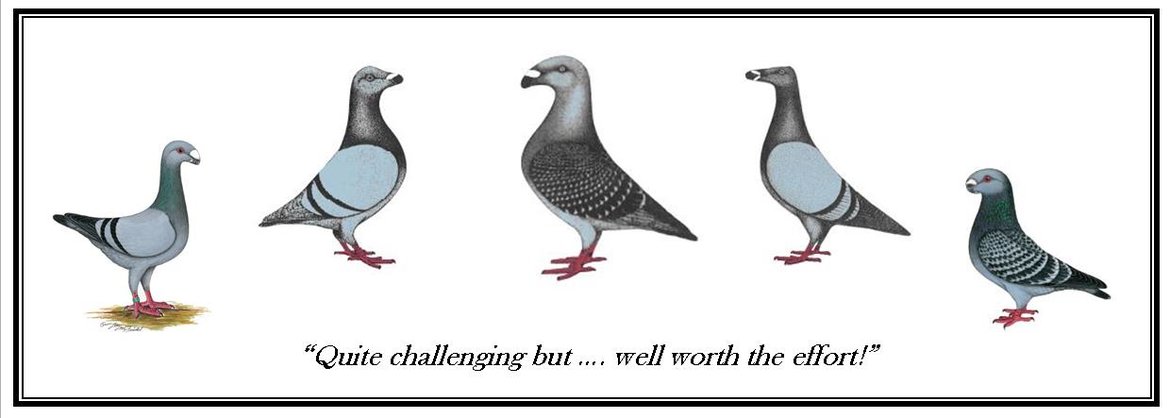130 Years of the Show Homer
Having spent a few days over the Christmas period looking back through old pigeon magazines and books, I came across an article regarding the formation of the first ever Show Homer Club in 1886, an impressive 130 years ago!!!
The first written standard for the Show Homer was introduced in the early part of 1886, when there was some correspondence in the Fancy press concerning the need to draw up a written standard for the Show Homer. This led to several leading fanciers suggesting the formation of a club to cater for the Show Homer, or Show Racer of the day. With support coming from every side a few good fancier met together at Otley on 22nd May 1886, discussed the question and formed the first Show Homer Club which quickly became the strongest, best supported specialist breed club in the United Kingdom.
Mr J Higham of Burnley was elected secretary and well supported by such fanciers as Messers Turner, Wilson, Cotton, Janes, Day and Christmas. This information is taken from an article on Mr J Higham which appeared in the 16 May 1890 issue of the Homing News and Show Reporter.
Two years after the formation of the Show Homer Club, the United Show Homer Club based in London and supported by southern fanciers, was formed. A year later the National show Homer Club was formed.
There is no indication of a date for the Show Homer standard in the first edition of Victor Woodfield’s book The Show Homer, its Management and Exhibition, printed by Moody Brothers of Birmingham in 1892, Perhaps the extract from the 21st March 1890 issue of the Homing News and show Reported gives us a further clue. The standard which had been adopted at a meeting of the show Homer Club at Crystal Palace was drawn up by eight leading fanciers, four from the north and four from the south of the country. There were four Crystal Palace shows between the formation of the Club and the article in the Homing News, 1886, 87, 88 and 89. But there had been an early rift between the northern and southern fanciers, in 1888 the United, London based, Club had been formed. Both clubs, north and south were, in 1890, producing their own ideal drawings for the breed. It would take time to draw up a standard, the 1886 show could possibly have been too early.
The Genuine, Show and Exhibition Homers Club in the absence of any further evidence plumped for the year 1887 and commemorated the hundred years of the standardisation of the Show Homer at its club show at Doncaster in 1987.
Below is a copy of the original standard and a few images used over the years until we get to the final drawing of today’s Show Homer Standard Drawing.
1887 Show Homer Standard
HEAD AND BEAK: to form one unbroken curve from back to head to top of beak. - 18 Points
THROAT: No description, see neck.
NECK: Not too long, thick at base, tapering well to the throat, which should be well cleaned out .
BEAK: Of medium length and substance, measuring from one and a quarter to one and three-eighths of an inch to the corner of the eye. - 3 Points
WATTLE: No description
EYE: Pearl or red, bright and well set, with a Wild appearance. - 5 Points
CERE: Fine and hard, dark preferred. - 9 Points
BODY: Of medium size, short and wedged shaped; back board, flat and straight, good depth of keel, chest board; shoulder strong and well carried, with straight breast bone and vent bones well up. - 14 Points
CARRIAGE: A bold upstanding and workmanlike appearance. - 8 Points
CONDITION: Hard and firm.
FEATHER: Flights short and board, well over-lapping each other to the end. - 18 Points
TAIL: Not too long, well drawn together and well carried.
LEGS: Of medium length, clean, strong and well set. - 3 Points
COLOUR: Sound throughout, in chequers clear and distinct. - 14 Points
FAULTS: None listed
DISQUALIFICATIONS: None listed
QUALITY: Not listed.
Information courtesy of articles written by M Purdam and others
Show Homer drawing over the years
"Quite Challenging ......... but well worth the effort!"
Contact Us
Unique Visits
85515

